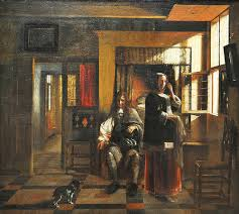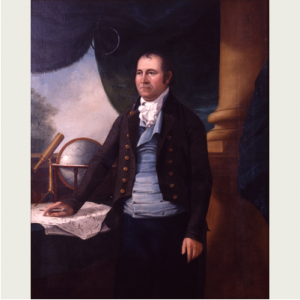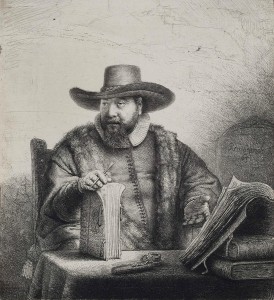By: Arianne Bisar, Amina Zaidi, and Jason Ni
Honors Colloquium Spring 2016, Section 11

Description
Interior with a Young Couple was painted by Pieter de Hooch in the year 1662. It is showcased in the Metropolitan Museum of Art. In 1913, philanthropist Benjamin Altman purchased this painting and it was placed in the Metropolitan in the same year. There, it is part of the Dutch Golden Age collection with paintings of other Dutch painters like Rembrandt and Hals.
This oil painting captures a scene of the interior of the house of a husband and wife. It shows clear influences from Rembrandt such as use of warm colors, use of gold and placement of the subjects. Like other Dutch Golden Age painters, de Hooch used dark colors and balanced compositions, played with light and perspective and paid attention to small details. He likes to use open doors, windows and hallways like in the painting. With these techniques he creates a very calm and peaceful portrait of the couple. De Hooch mostly painted scenes of the tavern or soldiers and switched to domestic scenes when he started his family in mid 1650s.
What story about the Dutch in America does your story tell
This painting shows the domestic scene of Dutch culture, with this painting we are able to see the mundane details of their everyday life. These types of paintings were very common during this era. Because of the economic prosperity in the Netherlands, an elite merchant class arose. People became rich enough to get portraits painted of them. The gold curtains and tile floor depicts this couple’s wealth. This also shows how women play a role in society. The painting even shows the woman standing and the man sitting. Women in the Dutch republic had one of the highest literacy rates than anywhere else in Europe. While their husbands were at sea, they took over their business. Even though this painting has both a man and a women, paintings of women in the household vastly outnumbered male portraits. Running the household was very much a woman’s job. Cleanliness is also something the Dutch take pride in; it represented virtue and good citizenship. This painting also depicts how clean and orderly their house is.
Bibliography
“Interior With A Young Couple – Pieter De Hooch.” YodelOut Art. YodelOut Art, n.d. Web. 12 Apr. 2016.
“Interior with a Young Couple Pieter De Hooch 1662-66.” Interior with a Young Couple by Pieter De Hooch, 1662-66. FindTheData, n.d. Web. 12 Apr. 2016.
“Interior with a Young Couple.” The Met. Metropolitan Museum of Art, 2000. Web. 6 Apr. 2016.
“Pieter De Hooch.” Pieter De Hooch. Pagina Artis, n.d. Web. 12 Apr. 2016.
“Pieter De Hooch.” RKD. Netherlands Institute for Art History, n.d. Web. 6 Apr. 2016.



